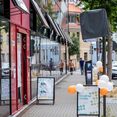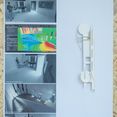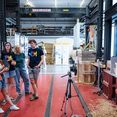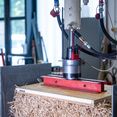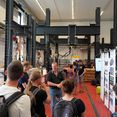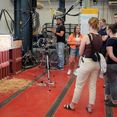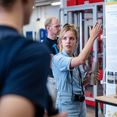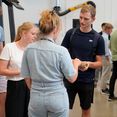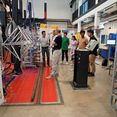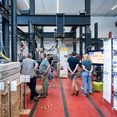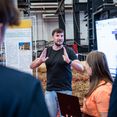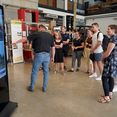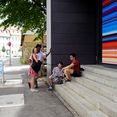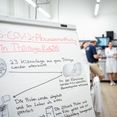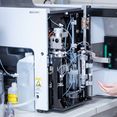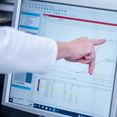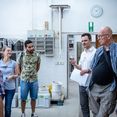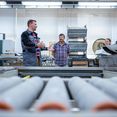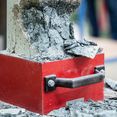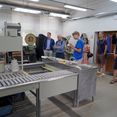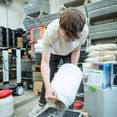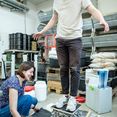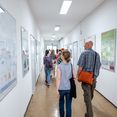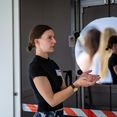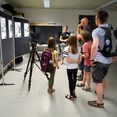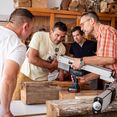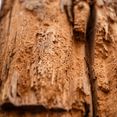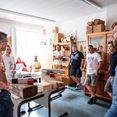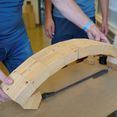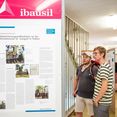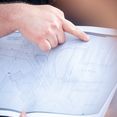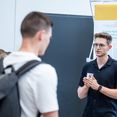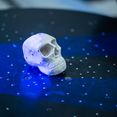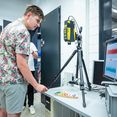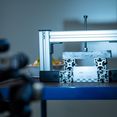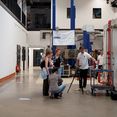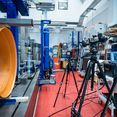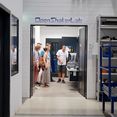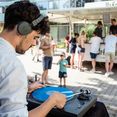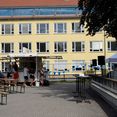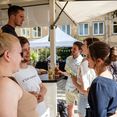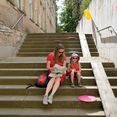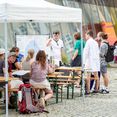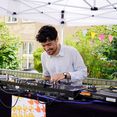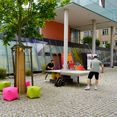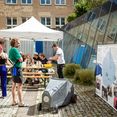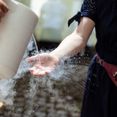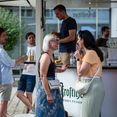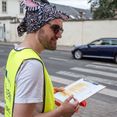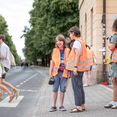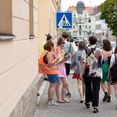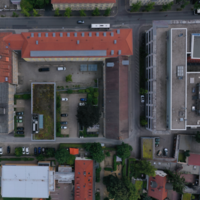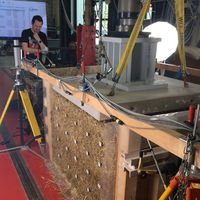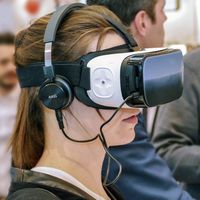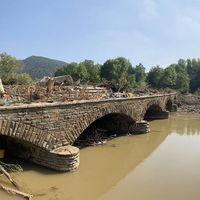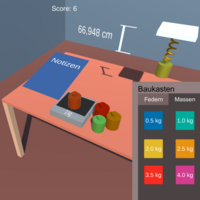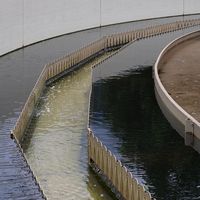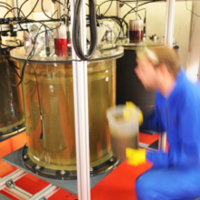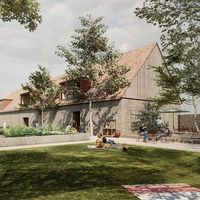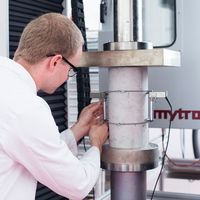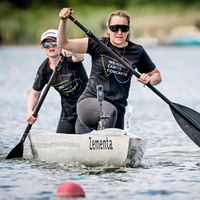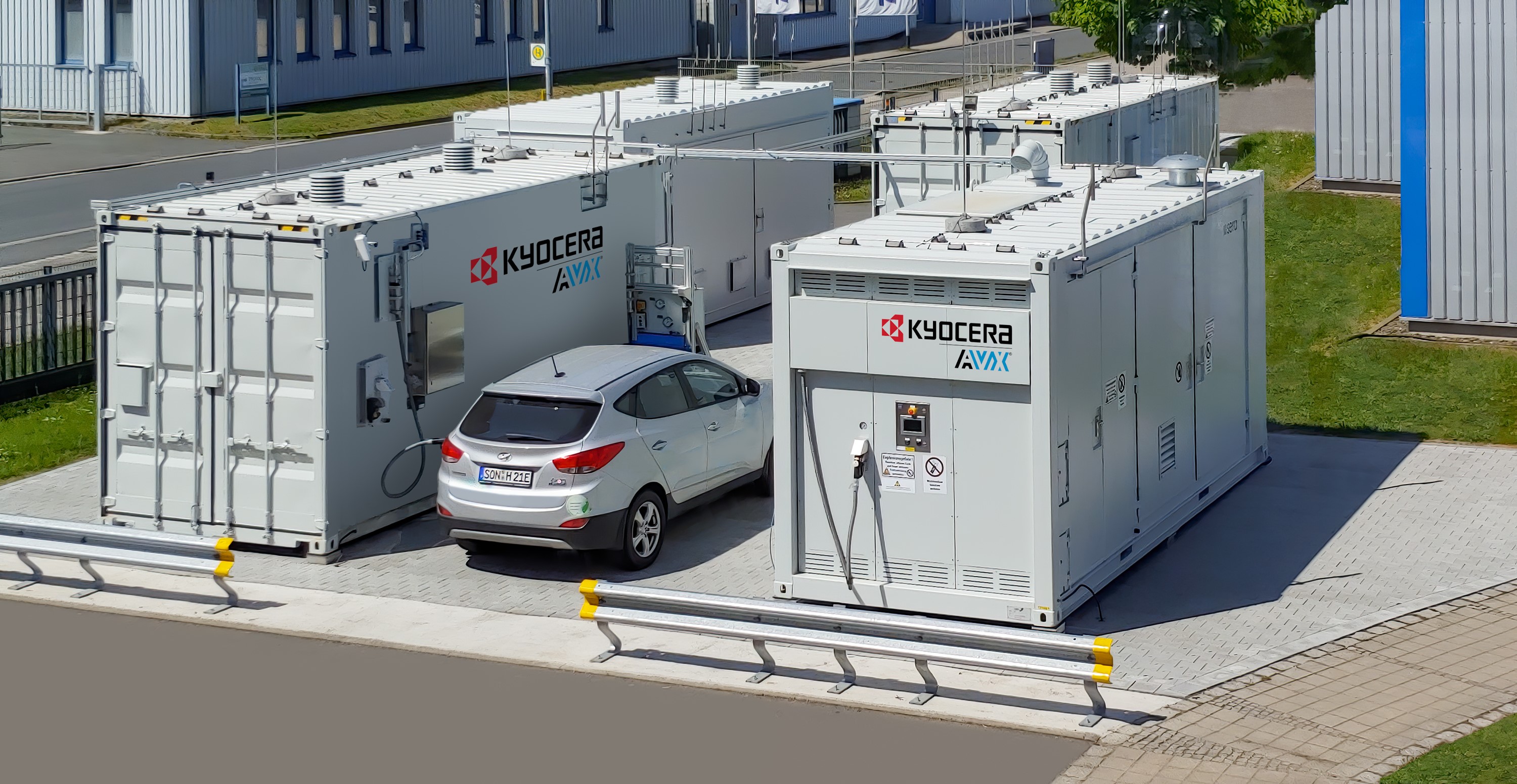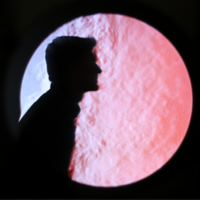SCIENCE MILE Q3
Tag der offenen Tür | 14. Juli von 13 bis 18 Uhr

Mitten in der Stadt liegt der Coudray-Campus. Hier sprießen die Ideen für eine grüne, lebenswerte Zukunft: Zur summaery23 blickten Interessierte hinter die Fassade und entdeckten spannende Visionen im Umgang mit Klimakrise, Digitaler Revolution und Globalisierung. Auf der Science Mile Q3 boten wir allerhand (Zaun-)Gästen einen bunten Blumenstrauß aus Wissenschaft und Lehre.

Geführte Touren, Experimente und Vorträge luden große und kleine Entdecker*innen ein, mit unseren Forscher*innen ins Gespräch zu kommen und selbst aktiv zu werden. Bei Musik, Getränken und Eis konnten die Besucher*innen der Coudraystraße verweilen und mehr über die Studiengänge der Fakultät Bauingenieurwesen erfahren.
Bildergalerie: Thomas Müller, Dana Höftmann

TOUREN
stündlich ab 13.30 Uhr
Führung durch die Labore des FIB
Prüfen, Testen, Untersuchen und Analysieren – Das Experimentelle Arbeiten am F.A.-Finger-Institut für Baustoffkunde.
Coudraystraße 11A - FIB | Treffpunkt: Foyer
14 & 16 Uhr
Rundgang: 300 Meter Wissenschaft
Geführte Tour zu den Highlights der Science Mile Q3
Coudraystraße 4 - CIB | Treffpunkt: Haupteingang
15 Uhr
Exklusive Alumni-Führung
Anmeldung über das Alumni-Büro
Coudraystr. 11A - FIB | Treffpunkt: Haupteingang
17 Uhr
Hart oder fair? Der neue Verkehr am Sophienstiftsplatz
Eine Ortsbesichtigung mit den Verkehrsplanern Raimo Harder und Philipp Viehweger
Sophienstiftsplatz | Treffpunkt: Buswendeschleife Hoffmann-von-Fallersleben-Straße

BIER, BEATS UND BERATUNG
Studienberatung, MINT-Experimental-Parcours für Schüler*innen, Kicker, Tischtennis, Musik von DJ timelord, Getränke und Eis
Innenhof (Coudraystraße 11)
300 METRE SCIENCE
From the hidden university to a Science Mile
In the summer semester, students developed a concept for how the Coudraystraße campus could be redesigned in the future to make the location more attractive for members of the university as well as for the public.
Location: Ground floor, corridor | Poster exhibition
STRAW AS A BUILDING MATERIAL
Resilient and ecological
Due to its good load-bearing and insulating properties, straw is suitable as a green alternative to conventional building materials. Current student theses and an experiment on load-bearing straw bale construction will be presented.
VTE, ground floor (hall) | demonstrations 13.00/15.00/17.00
PARFORCE
Immersive Virtual Reality Experiments
The aim of the project is to build a European, cross-university VR learning platform in civil engineering. Experience the first virtual tours and various e-learning scenarios.
VTE, ground floor (hall) | interactive exhibition 15.00-18.00
NATURAL HAZARDS AND RISKS IN STRUCTURAL ENGINEERING
Theses of the NHRE study programme
In the Master's programme »Natural Hazards and Risks in Structural Engineering«, challenging engineering tasks are solved in the planning, construction and realisation of structures under the influence of earthquakes, wind and floods, among others.
VTE, ground floor | poster exhibtion

ADDITIVE MANUFACTURE
3D Printing at MFPA
The ExAM 255 is the world's first industrial 3D printer that processes injection moulded granulate. It will be demonstrated how precisely fitting technical ceramic components are printed from granulate, which can be used almost everywhere.
MFPA Weimar, ground floor (hall) | duration: 15-20 Min.
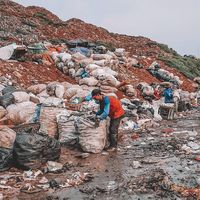
LESS IS MORE
Sealing a landfill
To prevent emissions from escaping into water or air, it makes sense to seal a landfill. It will be explained which sealing and drainage systems are most suitable.
MFPA Weimar, ground floor (hall) | duration: 20 Min.
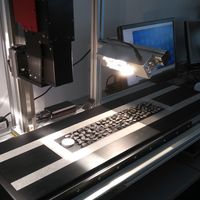
MAKING THE INVISIBLE VISIBLE
Hyperspectral image analysis
The human eye sees the environment multispectrally in the wavelengths of the primary colours red, green and blue. Using various materials, it will be demonstrated how hyperspectral image analysis is used to classify materials.
MFPA Weimar, ground floor (hall, room L.06) | duration: 5- 10 Min.
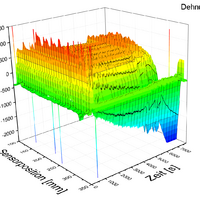
3D-PRINTING
... meets fibre optic sensor technology
Fibre optic sensors (FOS) use optical waveguides to investigate a variety of measurands. The possibilities opened up by the analysis method in combination with 3D printing of plastics will be illustrated.
MFPA Weimar, 2nd floor (module 3, room 27) | duration: 20-25 Min.
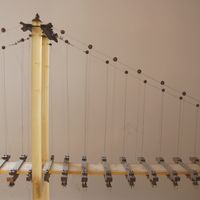
EXPERIMENTAL STRUCTURAL DYNAMICS
Student project
The application of methods to identify the natural vibration behaviour of structures is demonstrated on two complex model structures.
VTE, ground floor | poster exhibtion
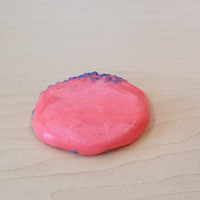
BOUNCING DOUGH OR HARD STONE
How shear forces can influence viscosity
Simple examples are used to explain the phenomenon of time-dependent material deformation and how this material property is measured with modern methods.
MFPA Weimar, ground floor (room B004) | duration: 15 -25 Min.
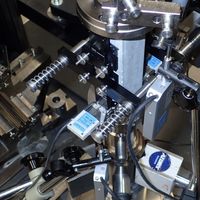
5 ELEPHANTES / 25 TONNES
How long does the material last?
Universal testing machines are used to demonstrate how materials such as mortar and steel deform under load. This is important to increase the safety of load-bearing structures and to avoid structural damage.
MFPA Weimar, ground floor (room B003) | duration: 30 Min.

TRY OUT GYPSUM RECYCLING
What gypsum has to do with the coal phase-out
Gypsum waste is generated during the processing of plasterboard as well as during the renovation and deconstruction of buildings. Create small plaster figures to take home and learn playfully how the material can be recycled.
MFPA Weimar, ground floor (lobby)
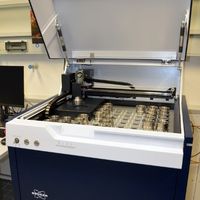
ON TRACK OF THE ELEMENTS
X-ray fluorescence analysis
Wavelength dispersive X-ray fluorescence analysis (WDXRF) is an analytical method for obtaining data on the elemental composition of various materials such as cement or glass. From the sample to the analysis result - Learn more about the application and fields of application of this method.
MFPA Weimar, ground floor (room A001)
DETECTION OF VIRUSES IN WASTEWATER
What does wastewater reveal about us? And how can it be used to combat infectious diseases such as the coronavirus? Visit our laboratory and get an insight into current research results from wastewater monitoring in Thuringia.
b.is-Labor (access via the scaffolding, between C7 and MFPA) | demonstrations 13.00/15.00/17.00
NOTHING IS WASTE, EVERYTHING IS A RESOURCE!
Waste and wastewater cycle explained
What is the difference between grey and black water and how can valuable resources contained in our waste and wastewater be (re)utilised?
b.is Technikum, 2nd floor (access via side entrance) | demonstrations every hour on the hour
QUO VADIS, ACKERBÜRGERSCHEUNEN?
In the past winter semester, eleven architecture students dealt with the upgrading, conversion and renovation of the historically significant Ackerbürgerscheunen.
FIB, 1st floor (corridor) | Exhibition
EXAMINING, TESTING AND ANALYSING
Guided tour of the FIB laboratories
For more than 60 years, building materials have been researched and developed at the F.A. Finger-Institut für Baustoffkunde in order to meet the manifold demands of new construction, renovation, environmental protection, recycling and the use of residual materials.
FIB (C11a), ground floor (lobby, meeting point: laboratory tour) | demonstrations every hour on the hour.
BAUHAUS.BETONKANU
Self-made boats from concrete
Since 1986, students of Weimar have been proving that self-made boats of concrete can float. Examine the latest models and learn more about the process of creating the canoes.
C11A, ground floor (lobby) | Interactive exhibition and boats
HYDROGEN
For a successful energy and mobility transition
In the hydrogen laboratory of the Chair of Energy Systems, you will gain insight into how an electrolyser works and learn how green hydrogen is produced, processed and stored.
hydrogen lab (C13c), ground floor, room 015 | 15.00 till 17.00
BETTER INDOOR CLIMATE
Applied research in the Schlieren laboratory
Discover the worldwide unique Schlieren Laboratory of the Chair of Building Physics and learn how hidden indoor air currents become visible.
Schlierenlabor (C13b), 1st floor, room 110 | 15.00 till 17.00

